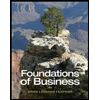Tesco's international foray began with its entry into Ireland in 1979 through the acquisition of a 51 percent equity stake in 3 Guys stores owned by Albert Gubay . In 1986, Tesco divested itself of its stake in the stores when it found that customers were rejecting the British products sold there... By treating the market as an extension of the UK operations, they neglected to adapt to local Irish tastes and suppliers which resulted in a general distrust on the part of the local consumers due to the fact there were few Irish products offered for sale (Palmer, 2004). Like Walmart would do in Germany, they also made a poor choice in their wholly owned purchase as the stores they acquired were mostly in poor, less densely populated locations not well suited for Tesco’s products. Tesco sold their stores to an Irish supermarket chain in 1986. Interestingly, Tesco re-entered the Irish market in 1997 with the purchase of another food retailer, this time securing the position as largest food retailer in Ireland with 109 stores. Although cautious initially to not repeat errors which led to customers’ distrusting the Tesco brand, the company again failed to meet customers’ expectations. Legal problems concerning female employees’ dress code and a revelation that the company was regularly overcharging customers in error and not fully refunding the charges created new distrust for Tesco on the part of the Irish consumers (Palmer, 2004). Learning from previous mistakes and with scale surpassing all other Irish food retailers, Tesco adopted a “buy Irish” campaign to improve their image and currently over half of the products sold in their Irish stores are Irish made or grown. They purchase over €650 million in Irish products each year for export to their global stores (Tesco, PLC, 2008). What challenges were faced by Tesco in the Irish market. This must be linked to the relevant ethical issue as discussed in the course when addressing each challenge faced. Provide suggestions to alleviate each of the issues faced. 1. N.B. Challenges were briefly mentioned in the case, you are to expand on these and make suggestions for the aspects not addressed.
Tesco's international foray began with its entry into Ireland in 1979 through the acquisition of a 51
percent equity stake in 3 Guys stores owned by Albert Gubay . In 1986, Tesco divested itself of its stake
in the stores when it found that customers were rejecting the British products sold there... By treating
the market as an extension of the UK operations, they neglected to adapt to local Irish tastes and
suppliers which resulted in a general distrust on the part of the local consumers due to the fact there
were few Irish products offered for sale (Palmer, 2004). Like Walmart would do in Germany, they also
made a poor choice in their wholly owned purchase as the stores they acquired were mostly in poor,
less densely populated locations not well suited for Tesco’s products. Tesco sold their stores to an Irish
supermarket chain in 1986. Interestingly, Tesco re-entered the Irish market in 1997 with the purchase
of another food retailer, this time securing the position as largest food retailer in Ireland with 109 stores.
Although cautious initially to not repeat errors which led to customers’ distrusting the Tesco brand, the
company again failed to meet customers’ expectations. Legal problems concerning female employees’
dress code and a revelation that the company was regularly overcharging customers in error and not
fully refunding the charges created new distrust for Tesco on the part of the Irish consumers (Palmer,
2004). Learning from previous mistakes and with scale surpassing all other Irish food retailers, Tesco
adopted a “buy Irish” campaign to improve their image and currently over half of the products sold in
their Irish stores are Irish made or grown. They purchase over €650 million in Irish products each year
for export to their global stores (Tesco, PLC, 2008).
What challenges were faced by Tesco in the Irish market. This must be linked to
the relevant ethical issue as discussed in the course when addressing each
challenge faced. Provide suggestions to alleviate each of the issues faced.
1. N.B. Challenges were briefly mentioned in the case, you are to expand
on these and make suggestions for the aspects not addressed.
Step by step
Solved in 4 steps




